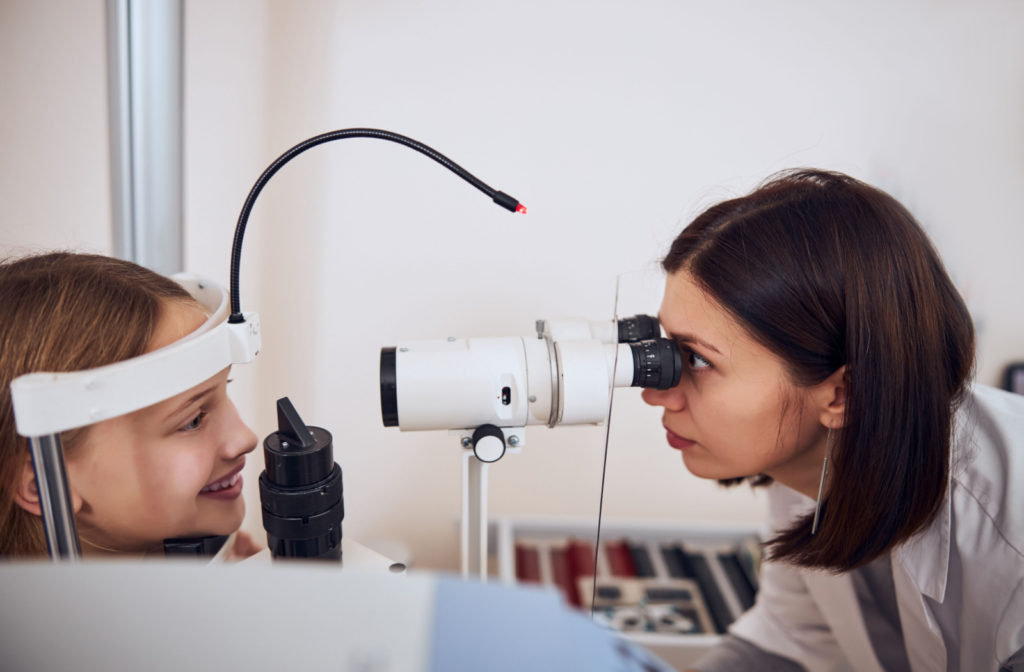The Significance of Regular Check-Ups with an Eye Doctor Optometrist
The Significance of Regular Check-Ups with an Eye Doctor Optometrist
Blog Article
Exploring the current Technological Innovations in Optometry and What They Mean for Eye Doctors
From the precision of Optical Coherence Tomography to the nuanced insights supplied by AI-driven diagnostic devices, these developments are establishing new requirements in patient analysis and treatment. As these improvements penetrate the technique, optometrists are encountered with the obstacle of welcoming these tools to enhance client results.
Technologies in Diagnostic Tools
Advancing the field of optometry, developments in diagnostic tools have actually revolutionized the way eye care experts evaluate and identify ocular conditions and visual disabilities. The past decade has seen substantial technological advancements, enabling more thorough and exact analyses. Optical Comprehensibility Tomography (OCT), as an example, supplies high-resolution cross-sectional pictures of the retina, allowing for the very early discovery of conditions such as glaucoma and age-related macular deterioration. This non-invasive imaging method has become important in modern optometric technique.
Another secret innovation is the intro of advanced corneal topography systems, which map the surface area curvature of the cornea with precision. These tools are specifically helpful for fitting get in touch with lenses and detecting corneal disorders. In addition, digital retinal imaging has changed typical ophthalmoscopy, using comprehensive, panoramic views of the retina that promote extensive aesthetic examinations.
The development of wavefront aberrometry has likewise been critical, making it possible for the analysis of refractive mistakes with unmatched precision (Eye Doctor Optometrist). This innovation helps in tailoring corrective lenses and improving medical end results for refractive surgical treatments. Collectively, these analysis innovations equip optometrists to provide remarkable client treatment, ensuring very early treatment and tailored therapy techniques, eventually enhancing aesthetic wellness end results
AI in Person Monitoring
Building on the foundation of cutting-edge analysis tools, the consolidation of artificial knowledge (AI) in patient monitoring stands for a transformative jump for optometry. AI systems are increasingly used to enhance effectiveness, accuracy, and personalization in client treatment.
In addition, AI-driven systems facilitate streamlined person communications and management procedures. Automated scheduling, online examinations, and personalized follow-up plans not just improve patient satisfaction however additionally maximize time administration for practitioners. These systems can triage clients based upon the seriousness of their conditions, ensuring that those in vital need get prompt interest.
Moreover, AI boosts decision-making by supplying eye doctors with evidence-based recommendations and treatment pathways. By integrating data from electronic health and wellness documents, AI devices supply insights that inform clinical decisions, minimizing the threat of mistakes and boosting patient outcomes. As AI remains to evolve, its role in client management will likely expand, reshaping the landscape of optometric care.
Advancements in Retinal Imaging
In the world of optometry, retinal imaging has actually experienced impressive technical advancements that are enhancing diagnostic capacities and patient care. Developments such as Optical Coherence Tomography (OCT) and fundus photography have changed just how optometrists visualize and assess the retina. OCT, specifically, provides high-resolution, cross-sectional photos of the retina, enabling the detailed evaluation of its layers. This ability is vital for early detection and management of conditions like glaucoma, diabetic retinopathy, and age-related macular deterioration.
Improved imaging modalities like OCT angiography are more refining diagnostic precision. This non-invasive strategy maps blood flow in the retina, providing vital insights into vascular health without the requirement for dye injections. Additionally, flexible optics innovation is being integrated right into retinal imaging systems to deal with ocular aberrations, supplying unmatched photo clarity. discover this info here Such innovations help with the recognition of min retinal changes that can signify illness development.
Moreover, improvements in artificial knowledge are increasing retinal imaging by allowing automated analysis of big datasets. These systems aid eye doctors in determining patterns a sign of pathology, thereby improving diagnostic precision and effectiveness. Collectively, these advancements are transforming retinal imaging into a foundation of modern eye treatment, boosting end results and broadening therapeutic opportunities.
Teleoptometry's Expanding Function
Teleoptometry is significantly ending up being an important component of eye care, driven by developments in digital communication and diagnostic tools. As optometry embraces digital improvement, teleoptometry helps with remote assessments, permitting optometrists to prolong their solutions past standard borders. This is especially useful in rural and underserved locations where accessibility to specialized eye treatment is frequently minimal. By leveraging high-resolution video conferencing and advanced retinal imaging, eye doctors can perform thorough eye tests from afar, making sure timely medical diagnosis and therapy.
The assimilation of artificial knowledge (AI) further enhances teleoptometry, enabling the evaluation of visual data and aiding in the discovery of eye conditions such as glaucoma and diabetic retinopathy. AI-powered algorithms can quickly translate intricate imaging information, offering eye doctors with valuable understandings that bolster scientific decision-making.
Moreover, teleoptometry sustains connection of care with seamless combination with digital wellness records (EHRs), allowing optometrists to maintain detailed patient histories. When consulting with various specialists., this makes certain that individuals receive tailored and regular care also.
In spite of these benefits, difficulties stay, consisting of making certain data protection and handling person expectations. Nonetheless, teleoptometry stands for a considerable stride in the direction of more available, reliable, and patient-centered eye care. As innovation progresses, its function is poised to broaden additionally.

Future Trends in Eye Treatment
A myriad of ingenious patterns is readied to improve the future of eye treatment, driven by technological advancements and the evolving needs of individuals. One considerable pattern is the assimilation of artificial intelligence (AI) in diagnostics, which guarantees to enhance the precision and performance of eye exams. AI formulas can examine large quantities of data from retinal pictures, potentially discovering conditions like diabetic person retinopathy and glaucoma earlier than conventional techniques.
Furthermore, tailored medication is acquiring traction in optometry, with hereditary testing notifying tailored treatment visit this web-site plans. This method aims to optimize person end results by customizing interventions to specific hereditary accounts. Wearable innovation, such as wise contact lenses, is also coming up, supplying real-time tracking of intraocular stress or glucose levels, hence offering continual understandings into ocular and systemic health and wellness.
The fostering of augmented truth (AR) and online truth (VIRTUAL REALITY) in training and person education and learning is an additional emerging fad. These innovations provide immersive experiences that can improve understanding and abilities both for people and optometrists. As these fads evolve, optometrists must remain abreast of technological advancements to provide advanced care, guaranteeing improved person end results and contentment in the vibrant landscape of eye treatment.
Conclusion

Jointly, these analysis advancements equip optometrists to supply premium client treatment, guaranteeing early intervention and tailored therapy approaches, eventually enhancing aesthetic health and wellness results.

As these modern technologies proceed to develop, optometrists have to adjust and integrate them right into technique, ultimately maximizing process performance and raising the requirement of eye care delivered to people.
Report this page